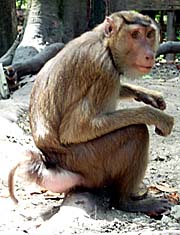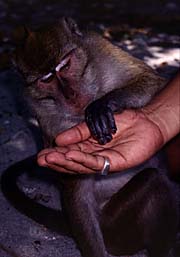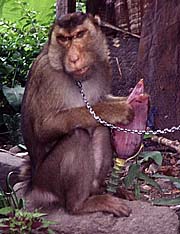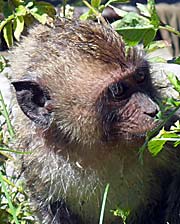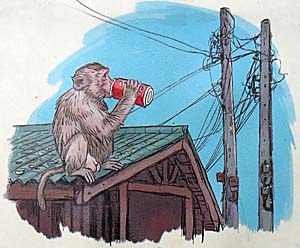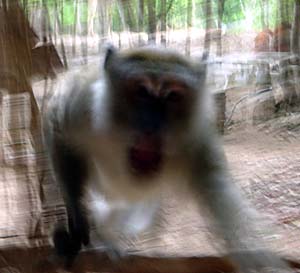1.
Introduction
Macaques appear in 22 subspecies from Morocco to Japan. Some of them are endangered species. There is also a population on Gibraltar in Spain. The crab-eating macaque (also: long-tailed macaque, latin name 'Macaca fascicularis', given by Thomas Stamford Raffles) are the most common kind of monkeys in Southeast Asia. Some of the other subspecies appear exclusevely on several Indonesian islands.
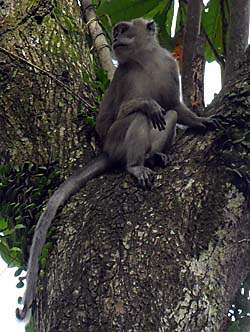
A long-tailed or crab-eating macaque on Pangkor Island, Malaysia. Image: Asienreisender, 2012
Macaques live in groups between 10 and 100 individuals. A group consists usually of 25% male and 75% female group members. There are hierarchies between the male as between the female monkeys. Young male have to leave the group when getting adolescent, females remain in the group. They don't stick very much to a certain territory. Though, sometimes it comes to conflicts between different groups for a certain territory as a feeding ground. A range of noises and mutual cleaning of their furs are part of their communication.
They can jump over distances of five meters.
Their natural habitats are forests of all kinds, rain forests, jungle, bamboo forests, wetlands, but also plantations. Though, they are very adaptable. In Hongkong for example they are counted as one of the worst invasive species.
Their diet consists of a great variety of plants and animals. Fruits and seeds, leaves, flowers, roots and bark they eat as well as bird chicks, nesting female birds, lizards, frogs and fish, invertebrates and bird eggs. Although they are ecologically well-adapted in their natural surroundings, in environments where they are not native they can cause a great danger for biodiversity.
Macaques are also feeding from cultivated fields and plantations, sometimes causing great damage for the farmers.
They reach an age of 15 to 20 years, in human captivity they can get up to 30 years old.
